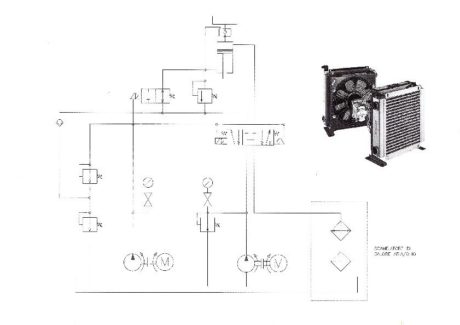Problem solved in a hydraulic plant that did not respond to controls after some hours of operation.

Nothing is truer than this saying, especially in the mechanical engineering field.

The engineering progress is full of errors, both small and gigantic, some harmless and others with sometimes catastrophic consequences, let us simply think of the TITANIC tragedy, where a sum of errors caused the death of over 1,500 people. Some time ago I was asked an advice to solve a problem on a hydraulic power plant intended for operating a single-opening press with top closing; after some hours of operation, it did not respond any longer to the opening control. A first analysis suggested that the problem was caused by the check valves on the pistons, which did not open, preventing the oil outflow, or by the hardening of the piston seals. The investigation was very hardworking and we had to reason by exclusion.
First, a static control highlighted that opening pistons worked at their limit capacity, since they operated at a minimum pressure of 210 bars. This compelled to work with the relief valve of the circuit and with the pump at the capacity limit, then causing an excessive oil heating. We noticed that the oil return pipe to the control unit of the hydraulic circuit reached so high temperatures that it was impossible to touch it, then much above 65 °C. According to the tables used for hydraulic plants, the maximum allowed temperature for the common hydraulic oil is about 50 °C, corresponding to a viscosity of around 5.5 °E. It is known that increasing the temperature the viscosity drops to very low values, with a temperature of 100 °C the viscosity decreases to 1.7 °E, therefore the oil becomes much more fluid, with a behaviour similar to water. With this very low viscosity, check valves have no longer a sufficient tightness and, since an adequate pressure to the servo-control of the valve misses, the latter does not open. The disassembly of relief valves did not bring any significant result. We made a further attempt replacing the oil with another with higher viscosity; this solution resulted in a certain improvement but without solving the problem definitively. After assessing that the oil temperature at the discharge was always very high, we decided to apply an air/oil heat exchanger, as indicated in the scheme (figure 1).
This modification implied also the introduction of an electric control for the motor and of a thermostat for the fan starter once reached a certain temperature. Due to practical reasons, hydraulic connections were implemented with flexible pipes.
The exchanger application solved the problem; in hindsight, we verified that this should have been provided since the beginning but, as you know, you learn by making mistakes.



